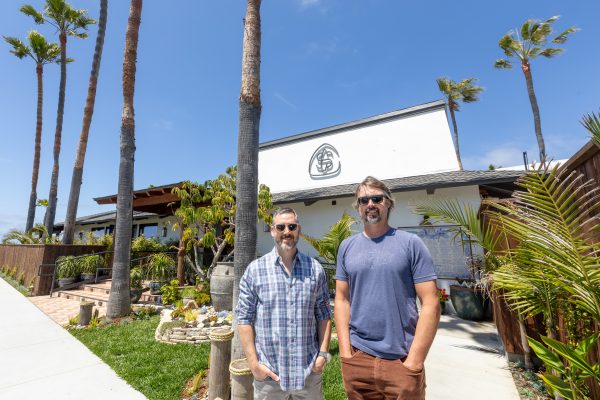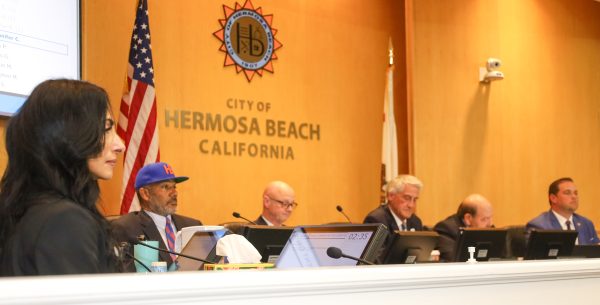 Educators are mulling at least five possible courses for the future of Hermosa’s financially ailing public schools: asking residents to tax themselves more, forming charter schools, merging with a neighboring school district, further reducing staffing and pay or, if all else fails, facing a county takeover of the schools.
Educators are mulling at least five possible courses for the future of Hermosa’s financially ailing public schools: asking residents to tax themselves more, forming charter schools, merging with a neighboring school district, further reducing staffing and pay or, if all else fails, facing a county takeover of the schools.
Unless hard choices are made “it is only a matter of time before the district becomes insolvent,” in which case it would be taken over by Los Angeles County education officials, Jim Caldwell, a member of a special committee on school finances, told the Hermosa Beach City School Board.
The 1,300-student, two-campus district, serving students in kindergarten through eighth grade, has limped along for about a decade with some staffing cuts and unpaid furloughs, while volunteer fundraisers cover about 10 percent of its $10 million budget. But officials warn that continued state budget cuts to local schools could empty the coffers of the century-old Hermosa district within a few years.
But educators are anxiously awaiting the outcome of Gov. Jerry Brown’s efforts to place a measure before voters in June, asking for an extension of higher taxes to fund K-12 schools at current levels. If a ballot measure is successful, the Hermosa district could have a couple of years’ breathing room to survey its financial options. But if it is not, and severe budget cuts result, “we wouldn’t make it through next year” with current curriculum and programs intact, Caldwell told the board.
If the school district could not meet its payroll, Los Angeles County officials would step in and make decisions including “who works here and how much they make,” Caldwell said.
Committee members’ comments carried a sense of urgency. They said if the state makes further steep cuts, the district must raise more money through a parcel tax or some other means, or must merge with another district, or must make drastic cuts. A failure of the Brown tax extension could provoke $12 billion in additional state budget cuts, perhaps chopping another 20 percent from the local budget, officials said.
“If the district keeps its current staffing and pay scale, under the $12 billion scenario, we would not have enough money to get through next year,” Caldwell, a district parent, said in an interview.
Committee member Greg Breen, a former school board member, said Hermosa will not be left without public schools.
“We will of course survive in some form, but if revenue decreases we will have to make substantial cuts to be able to do so, mostly to salaries and benefits – things like increasing class sizes, increasing furlough days, combining administrative functions, cutting out specialized teachers, and reducing librarians and library access, as well as deferring investments in computers and books,” Breen said in an interview. “These all have an effect on the quality of the education we provide, so the exercise is to balance cost and educational effectiveness. We’re looking at everything and are evaluating every suggestion.”
For about a decade, the school board has been laying off numbers of teachers near the end of the school year, and mostly rehiring them just before the start of the next year, after the fundraising total from parents and other volunteers is known. The special committee is trying to get a handle on the potentially devastating financial picture before tough calls have to be made by the school board.
“We are trying to be proactive and get ahead of this,” school board and committee member Jack Burns told the board.
Caldwell praised educators for pulling together in tough times, pointing out that teachers and school staff took a “stealth pay cut” in the form of five unpaid furlough days, and recent employee contracts were approved following a new, more cooperative method of negotiations.
The committee will seek input from the public at a workshop Jan. 26, and aims to make recommendations on a course of action for the school board in March.
Committee member George Schmeltzer, a former Hermosa councilman, said it was unclear at this point whether a merger with the larger Manhattan Beach or Redondo Beach unified school districts would save money. He said unified districts, which include high schools, get more money per student from the state, and some administrative costs could be saved, but the merger option remains under study.
Hermosa officials have met with the superintendents of both neighboring districts to discuss the matter. A merger could only take place after a lengthy process in which county and state officials make two separate studies of the financial feasibility of such a plan, the affected school boards hold public hearings, and voters in both school districts approve a merger.
The process could be touched off by the school boards, or by a petition with signatures of 25 percent of registered voters in the merger area.
Schmeltzer has stressed the preliminary nature of merger discussions.
Possible formation of charter schools also is under study by the committee, but Caldwell told the board that research so far has not identified an overall cost savings with that option.
On another matter, Schmeltzer said Redondo educators were willing to consider temporarily accepting some transfer students from Hermosa if enrollment increases and the Hermosa schools begin to overflow.
Turning to the option of raising money through a parcel tax on Hermosa property owners, committee member J.R. Reviczky, a former Hermosa councilman, described a rough road. A parcel-tax ballot measure would require approval by a two-thirds majority, and the school district’s most recent measure failed in 2008.
“It’s not going to be easy…but it’s an option the school board will have to consider,” Reviczky said.
The school board would have to act by July to get a parcel tax on the November ballot, he said. But even if a parcel tax was approved, the school district wouldn’t see any of the revenue until the next fiscal year.
“While there is a ray of hope, it’s not an immediate source of relief for the crisis you’re going through,” he said.
Revenues from a parcel tax can be spent on educators’ salaries, which make up the bulk of ongoing school costs. Bond issues, which also can be placed before voters, may only be spent on school infrastructure items such as construction and maintenance, he said.
The committee will seek input from the public at a workshop 6 p.m. Wednesday, Jan. 26 at the Hermosa Valley School multipurpose room on Valley Drive north of Pier Avenue. Residents can email questions about the schools’ future to the committee at questions@hbcsd.org. ER











